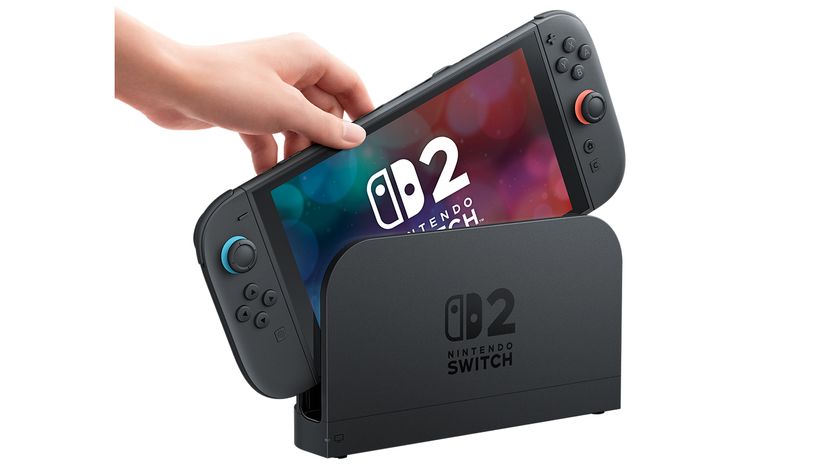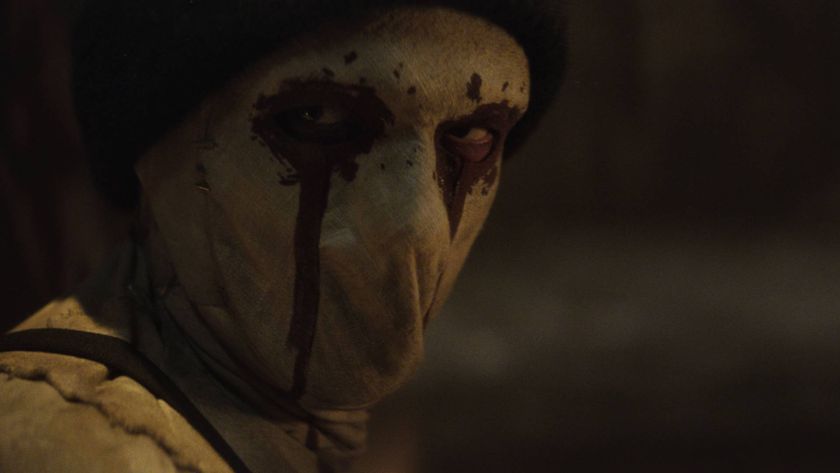"It's the Half-Life 2 of racing games." Okay, stop right there. Edge can see a press-baiting headline a country mile away. But Aki Jarvilehto, director of business development at Bugbear, has a point. He doesn't mean it in the sense that his game could be qualitively as good as Half-Life 2, but more that it shares many of that game's design principles.
"Gamers should be playing on the edge," continues Jarvilehto. "They need to be on the limit and feeling each impact. Our environments are completely dynamic - there are no invisible ropes guiding the player around the tracks."
Each track contains over 2,000 dynamic objects, providing a playground for damage and mayhem on a scale never seen before in a game of this type. Because so many objects have individual values, and are fully incorporated into the physics system, they can be set up to cause the same kind of chain reactions Valve so proudly demonstrated in its most recent Half-Life 2 demo. Water tanks held up by wooden struts can be smashed to fall down on chasing rival vehicles. Wood piles can be shunted to scatter over the road and ramps can be broken or blocked to hinder the chasing pack.
In structural terms, Flat-Out may sound like any other driving game: eight competing drivers in any one race, three distinctly different locations each with 15 track variations (making a total of 45 courses altogether), weather effects, day and night racing and realtime damage. As soon as Edge gets into the driving seat of one of the game's vehicles the world comes to life.
The Flat-Out universe is so pleasurably reactive and breakable that Edge spends much of its time experimenting, going off-road and demolishing as much scenery as possible. The rival drivers' AI is still rudimentary, but Edge is in a most mischievous frame of mind today. It holds back and waits until the pack has driven off into the distance before moving in behind a crash barrier made up of 100 or so tyres. The stacks are then toppled into the road and the tyres scatter everywhere just as the other vehicles are completing their first lap.
The resulting chaos is fascinating. Some cars swerve erratically to avoid the obstacles while others blunder over the rubbery debris and collide with each other. It's a scene reminiscent of a classic Keystone Cops caper. This is the kind of dynamic and unpredictable behaviour that should ensure every Flat-Out race is unique. "We don't want to make a simulation," adds Janne Alanenpaa, Bugbear's managing director. "Everything is focused on fun. We want players to enjoy fighting for first place, and if that means trashing the other vehicles and limping over the line with their engine on fire, then so be it."
Sign up to the 12DOVE Newsletter
Weekly digests, tales from the communities you love, and more
Bugbear decided at a very early stage not to seek permission from car manufacturers to license vehicles. The company is supremely confident that once consumers play a demo of the game, they'll be hooked by the unique Flat-Out racing experience. Burnout is mentioned several times during the day and it's clear the team admires Criterion's splendid racer and would love to emulate its critical and commercial success.
To add to the air of anarchy is an integrated physics system that extends to each driver, including the player's avatar. Though none of this code is present at the moment, the idea is to have ragdoll drivers who will be jolted by impacts and who can even fly through windscreens and into the paths of oncoming cars. "Vehicles will roll and the drivers will react to this accordingly," promises Alanenpaa. "We want this to look dramatic but not punish the player too much. So when a big crash like this happens, the driver will be out of the car for a short time before it is reset."
Alanenpaa goes on to discuss the possibility of other drivers running over fallen rivals, though "there will be no blood," he asserts. Such excesses may sound a little improbable, but it's completely in-keeping with the game's broad philosophy of chaos over clinicism. Shortcuts can be taken but often objects, such as flimsy buildings, must be demolished or disturbed to open the way ahead. The team wants players to experiment with finding the fastest route around the track before using this knowledge to their advantage in multiplayer games.
One drawback of the unpredictable nature of each race is that it could cause nightmares for Bugbear in terms of game balance. "We want it to be as much fun as Super Mario Kart," says Alanenpaa. "We want players to be constantly competing and fighting for position. There's a lot of balancing to be done, but as we've already got the game running, this is the area to focus on."
Bugbear has made driving games before, such as Rally Trophy and Tough Trucks: Modified Monsters, but with Flat-Out the team knew that competitive online play would be a major factor. With such an irresistibly crushable world, the idea that players would only be able to race against CPU drivers was clearly anathema to Alanenpaa.
A maximum of eight vehicles will take to the track in any race and while online functionality is still at a nascent stage, Edge expects that alongside the 'traditional' track racing there will be a number of off-beat tournaments and arenas to beat your mates in.
A Destruction Derby-style free-for-all seems assured and, as the game is so dynamic, the only restraints to creative multiplayer mayhem will be the limits of the track designers' imaginations. Edge looks forward to a few variants that don't include the words 'capture the flag' or 'deathmatch'. One such minigame the team is toying with is a long jump contest. Ragdoll physics combined with an Olympic event? Really? Alanenpaa talks enthusiastically about players ramming their vehicles full-tilt into barriers: "The idea is to fling the driver as far out of the car as possible," he says, a roguish glint sparkling in his eye at the prospect.
The game is being developed simultaneously across all formats, and only the PS2 version will have some minor changes to content. As you'd expect, the textures will be less detailed and there will be fewer dynamic objects around the track, but, reckons Bugbear, nothing that will alter the gameplay dramatically.
After talking to the team on this subject it becomes clear that it is proud of the challenges it's overcome to make the PlayStation2 version as much fun as the PC and Xbox builds. Flat-Out still has a year to go before release, but it's heartening to play a game at this stage that has so many emergent possibilities. Yes, the off-road galivanting can get a little staid after half an hour or so, but that's only because there's no competitive spirit in there yet to back it up.
Put seven other personalities into these arenas, and Edge can't imagine it not becoming compulsive. If the minigames and multiplayer aspects can mimic the technical excellence on display elsewhere then its namesake, Burnout, should be rather concerned.











